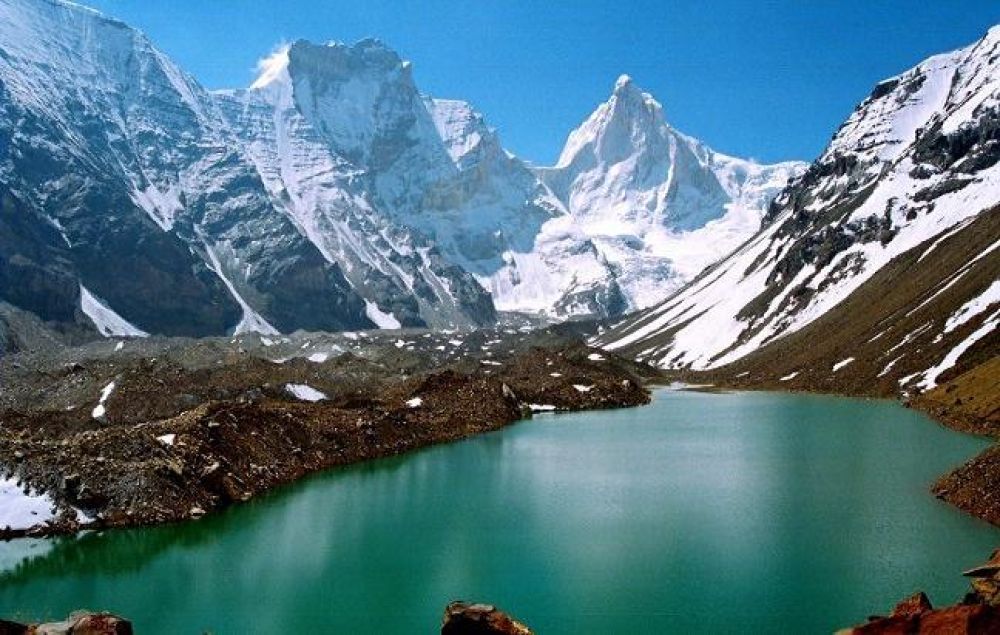

Nestled in the Garhwal Himalayas, Kedar Tal, also known as Shiva's Lake, is an emerald-green glacial lake situated in the Uttarkashi district of Uttarakhand, India. At an elevation of approximately 4,750 meters above sea level, it has engendered a rich tapestry of mythological and natural significance for pilgrims and adventure enthusiasts alike.
Although Kedar Tal has been known to locals and ascetics for centuries as a meditative retreat, it wasn't until the late 20th century that it started gaining popularity among trekkers and spiritual travelers. The inception of tourism in this region can be traced back to the growth of mountaineering and exploration expeditions in the Himalayas post-1947, after India gained independence.
The region's potential for tourism was furthered by the establishment of Govind Pashu Vihar National Park and Sanctuary in 1955, which includes Kedar Tal within its bounds. This move paved the path for regulated tourism while focusing on the conservation of the diverse Himalayan flora and fauna.
It wasn't until the 1980s and 1990s that the trek to Kedar Tal, involving rocky terrains and steep climbs, started being recognized as a desirable challenge by trekkers around the world. Accordingly, adventure tourism agencies began promoting this trek, which contributed to a modest influx of adventurers seeking the serenity and unparalleled beauty of Kedar Tal.
In recent years, travel trends around Kedar Tal have shifted towards eco-tourism and sustainable practices in response to the increasing awareness of environmental issues. The promotion of homestays, responsible trekking, and eco-friendly campsites has become prevalent, ensuring minimal human impact on this pristine ecosystem.
The digital age has augmented Kedar Tal's allure, with stunning photographs and trip accounts regularly featuring on social media platforms, inspiring a new generation of travelers. The emphasis is now on small group travels that maintain the sanctity of the place, offering a comprehensive experience that involves local culture exposure, in addition to the adventure that comes with high-altitude trekking.
Despite its beauty, Kedar Tal faces challenges related to overtourism, waste management, and ecological degradation. Initiatives by non-governmental organizations and government bodies, alongside an educated and self-regulated traveler community, are crucial for the sustainable future of tourism at Kedar Tal.
Furthermore, the region is prone to natural calamities, which can occasionally hinder tourist activity. To manage this, the government and local bodies have developed early warning systems and better infrastructure to ensure the safety of tourists.
The journey of tourism in Kedar Tal is as riveting and complex as its topography. From a secluded spiritual spot to a sought-after trekking destination, Kedar Tal has emerged as a gem in the crown of Uttarakhand's tourism industry. The focus, going forward, needs to be on preserving the ecological balance while providing a high-quality and sustainable tourist experience, ensuring that Kedar Tal remains an enchanting destination for generations to come.